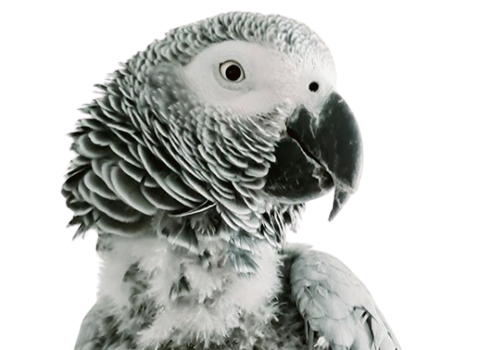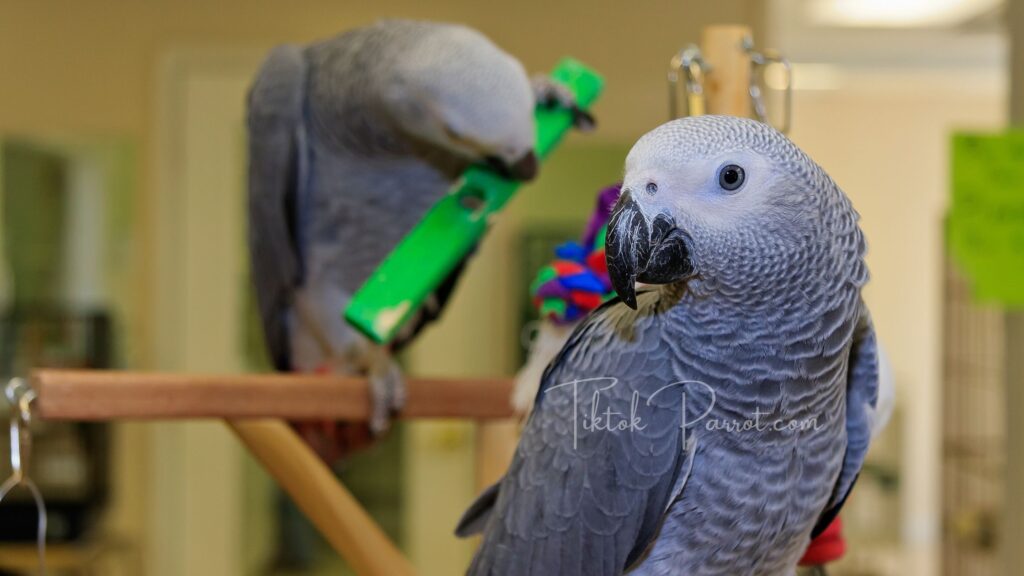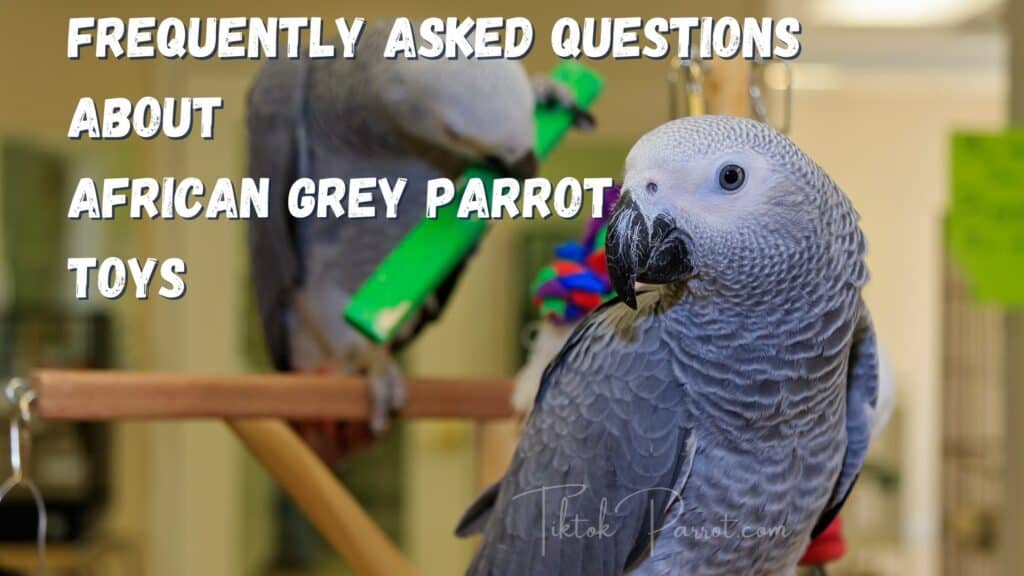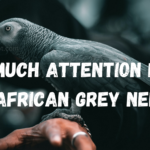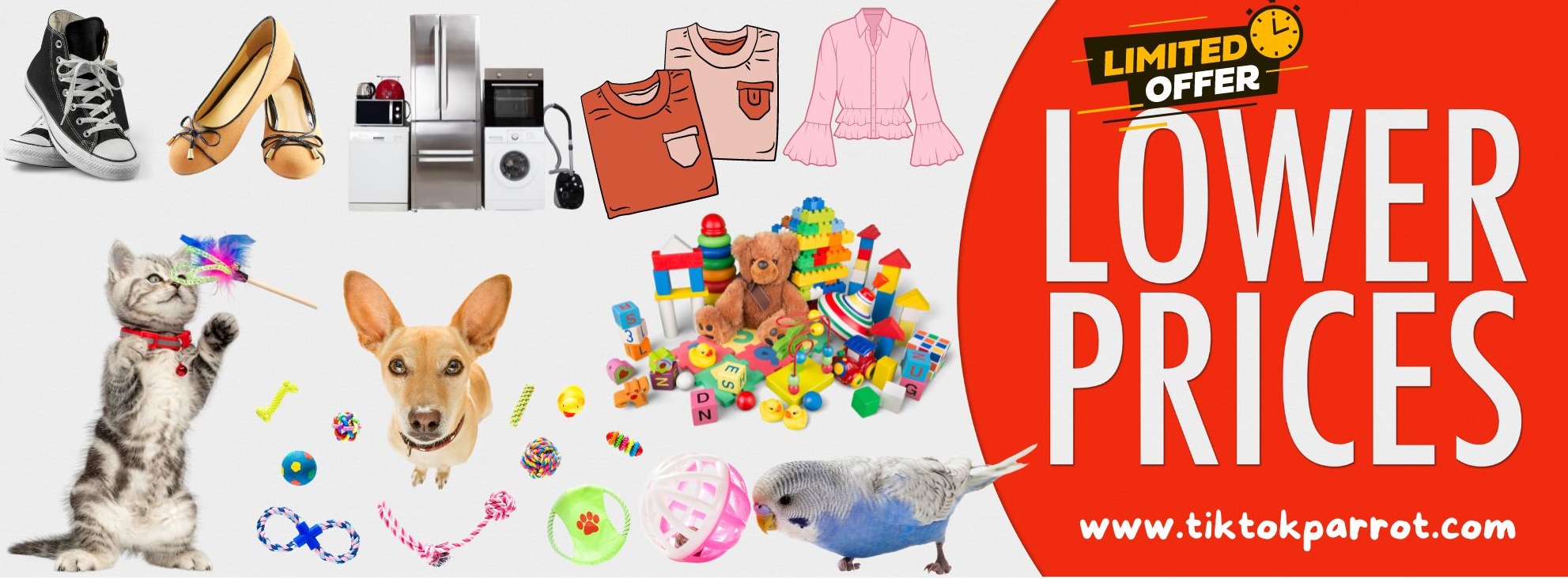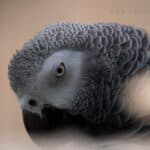Parrot toys are a great way to keep your feathered friends entertained and mentally stimulated. But with so many options on the market, it can be difficult to know which toys are best for your parrot. To help you navigate the world of parrot toys, we’ve compiled a list of the most frequently asked questions about parrot toys.
From materials to safety to the best types of toys for different species, we’ve got you covered. So, whether you’re a new parrot owner or a seasoned pro, keep reading to discover the answers to all your parrot toy questions.
“Get the answers to all of your questions about African Grey Parrot toys! From the best types to use, to how to keep your parrot entertained and engaged. Discover everything you need to know to keep your African Grey Parrot happy and healthy with our comprehensive guide.”
Why are toys important for parrots?
As pet parrot owners, we all want to provide the best possible care for our feathered friends. One question that often arises is whether parrots need toys in their daily lives. The short answer is yes, parrots do need toys. But let’s dive a little deeper into the reasons why.
First and foremost, toys provide mental stimulation for parrots. In the wild, parrots spend much of their day foraging for food and exploring their environment. In captivity, however, parrots may not have as much opportunity to engage in these activities. Toys can help to provide that stimulation, keeping parrots mentally and physically active. This can prevent boredom and reduce the risk of destructive behavior.
Toys also provide parrots with an outlet for natural behaviors such as chewing and shredding. Parrots have strong beaks and need to chew to keep them healthy. Without appropriate toys to chew on, parrots may start to chew on inappropriate items such as wooden furniture. Providing toys that are safe to chew and shred will keep them happy and healthy.
Additionally, toys can provide socialization opportunities for parrots. If you have more than one parrot, they can play together with toys and bond. Even if you only have one parrot, interacting with toys can provide socialization opportunities and help them to bond with you.
It’s important to note that not all toys are created equal. It’s important to choose toys that are safe and appropriate for your parrot’s species and size. Avoid toys that have small parts that can be easily swallowed or that are made of toxic materials. It’s also a good idea to rotate your parrot’s toys regularly to keep them interested and engaged.
In conclusion, parrots do need toys in their daily lives. Toys provide mental stimulation, an outlet for natural behaviors, and socialization opportunities. By providing a variety of appropriate and safe toys for your parrot, you can help to keep them happy and healthy.
What kind of toys do African grey parrots like?
African grey parrots are known for their intelligence and love of puzzles, making them a unique pet to have. These intelligent birds require a variety of toys to keep them mentally and physically stimulated. In this blog post, we will discuss the types of toys that African grey parrots like and why they are important.
Puzzle toys – African grey parrots love to solve puzzles and are highly intelligent. Puzzle toys such as foraging toys, that require the parrot to figure out how to get to the food inside, are a great way to keep them mentally stimulated.
Chew toys – African grey parrots have strong beaks and need to chew to keep them healthy. Provide them with a variety of chew toys, such as wooden blocks, rope, or rubber toys, to keep their beaks in good condition.
Mirrors – African grey parrots are social birds and enjoy interacting with other birds. Mirrors can provide them with the opportunity to “socialize” with their reflection and keep them entertained.
Rope toys – Rope toys are great for African grey parrots as they provide an opportunity to climb and play. These toys can also be used to create a fun and interactive environment for your parrot to play in.
Sound toys – African grey parrots are known for their love of music and can learn to mimic a variety of sounds. Sound toys, such as bells or chimes, can provide them with the opportunity to make music and express their musical talents.
It’s also important to note that African grey parrots require a lot of interaction and attention from their owners. So, make sure to spend quality time with your parrot, engaging in activities like training, playing and talking to them.
In conclusion, African grey parrots need a variety of toys to keep them mentally and physically stimulated. Puzzle toys, chew toys, mirrors, rope toys, and sound toys are all great options for these intelligent birds. By providing a variety of appropriate and safe toys, you can help to keep your African grey parrot happy and healthy. Remember to also spend quality time with your parrot, interacting and bonding with them.
How many toys should an African grey have?
One important aspect of providing this stimulation is through the use of toys. But how many toys should an African grey have?
The answer to this question varies depending on the individual bird, but as a general rule, African grey parrots should have at least 3-5 different toys available to them at all times. This variety will help to keep your bird mentally stimulated and engaged, as they will have different toys to play with and explore.
When choosing toys for your African grey, it’s important to select a variety of different types, including those that encourage foraging, climbing, and manipulating. Some good options include ropes and ladders for climbing, puzzle toys for foraging, and blocks and beads for manipulating.
It’s also important to rotate your bird’s toys on a regular basis. This will help to keep them interesting and prevent your bird from getting bored with their current selection.
It’s not just about the quantity, but also the quality of the toys. It’s important to choose toys that are made from safe, non-toxic materials that are appropriate for your bird’s size and abilities. Avoiding toys with small parts that can be easily chewed off and swallowed, and sharp edges that can hurt your bird.
In addition to providing plenty of toys, it’s also important to spend time interacting with your African grey. This can include playing games, training, and simply spending time talking and bonding with your bird.
In conclusion, African grey parrots should have at least 3-5 different toys available to them at all times and it’s important to choose a variety of different types of toys, and rotate them regularly. Also, the quality of the toys is important too, so choose safe, non-toxic toys that are appropriate for your bird’s size and abilities. And don’t forget to spend time interacting with your bird as well.
Can you put too many toys in a bird cage?
When it comes to providing toys for your pet bird, it can be easy to get carried away and fill their cage with as many toys as possible. However, it’s important to remember that too many toys in a bird cage can actually be detrimental to your bird’s health and well-being.
One of the main issues with overcrowding a bird cage with too many toys is that it can make it difficult for your bird to move around comfortably. Birds need plenty of space to fly and move around, and a cage filled with toys can make it difficult for them to do so. This can lead to stress and frustration for your bird, and can even lead to health issues such as feather picking and overgrooming.
Another issue with too many toys in a bird cage is that it can make it difficult for your bird to find and access their food and water. Birds need to be able to easily find and access their food and water in order to stay healthy, and a cage filled with toys can make it difficult for them to do so.
In addition, too many toys in a bird cage can also make it difficult for your bird to rest and sleep comfortably. Birds need a quiet and dark place to sleep, and a cage filled with toys can make it difficult for them to find such a place.
So, how many toys should you have in a bird cage? As I mentioned above it’s recommended to have around 3-5 different toys in your bird’s cage at a time, and to rotate them regularly. This will help to keep your bird mentally stimulated and engaged, while also providing them with enough space to move around and access their food and water.
It’s also important to choose the right size toys for your bird’s cage and for your bird’s size. Avoid too small toys, that could be swallowed, or too big toys that could take too much space and make it difficult for your bird to move around.
It’s also important to keep the cage clean, regularly removing any toys that are no longer being used or that have become broken or worn. This will help to keep your bird’s cage clutter-free and will make it easier for your bird to move around and access their food and water.
In conclusion, it’s important to provide your bird with toys to keep them mentally stimulated, but too many toys in a bird cage can lead to stress, frustration and make it difficult for your bird to move around, access their food and water and sleep comfortably. A good rule of thumb is to have around 3-5 different toys in your bird’s cage at a time, and to rotate them regularly. Also, choose the right size toys for your bird’s cage and for your bird’s size, and keep the cage clean.
Do parrots get bored of toys?
Toys play an important role in providing this stimulation, however some parrot owners may wonder if their feathered friends can get bored of their toys.
The short answer is yes, parrots can get bored of toys. Just like any other animal, parrots can become accustomed to their environment and the toys in it. This can lead to a lack of interest in their toys and a decrease in activity levels.
To prevent boredom, it’s important to provide a variety of toys for your parrot to play with. Rotating the toys on a regular basis can also help to keep your parrot interested. For example, you can switch out a toy every week or two, or even every day if you want to be more frequent. This way, your parrot will always have something new and exciting to explore.
Another way to keep your parrot interested in its toys is to make them interactive. For example, you can hide food or treats inside a toy, or attach a toy to a string and make it interactive. This will encourage your parrot to use its problem-solving skills and explore the toy in a new way.
As I discussed above, it’s also important to consider the size of the toys. Parrots have different beak sizes and strengths, and not all toys are suitable for all parrots. Make sure the toys you provide are appropriate for your parrot’s size and strength.
Lastly, make sure to observe your parrot’s behavior and playtime. If you notice your parrot is not interacting with its toys as much as it used to, it might be time to change things up. With a little bit of effort and creativity, you can keep your parrot entertained and engaged for hours on end.
In conclusion, parrots can get bored of toys if not provided with variety and interactive activities. It is important to provide a variety of toys and rotate them regularly, and make them interactive. Observing your parrot’s behavior is also important to notice if they are not interested in their toys, and change them accordingly. With these tips, you can ensure that your parrot stays happy and healthy.
How can I encourage my African Grey parrot to play with its toys?
If you’re struggling to get your African Grey parrot to play with its toys, here are some tips to encourage playtime.
First, it’s important to provide a variety of toys for your African Grey parrot to play with. Rotating the toys on a regular basis can help to keep your parrot interested. For example, you can switch out a toy every week or two, or even every day if you want to be more frequent. This way, your parrot will always have something new and exciting to explore.
Another way to keep your African Grey parrot interested in its toys is to make them interactive. For example, you can hide food or treats inside a toy, or attach a toy to a string and make it interactive. This will encourage your parrot to use its problem-solving skills and explore the toy in a new way.
You can also try to participate in playtime with your African Grey parrot. Some parrots may be more inclined to play with their toys if their owner is also playing with them. You can do this by showing your parrot how to use a toy, or even playing with a toy alongside your parrot.
Another way to encourage your African Grey parrot to play with its toys is to place the toys in different areas of your home. Parrots are naturally curious birds and they may be more inclined to play with a toy if it’s in a new location.
Lastly, it’s important to be patient with your African Grey parrot. Some parrots may take longer to warm up to new toys, while others may be more hesitant to play with them. Be patient and continue to provide new and interesting toys for your parrot to explore.
In conclusion, encouraging your African Grey parrot to play with its toys requires providing a variety of toys, rotating them regularly, making them interactive, participating in playtime, placing them in different areas of your home and being patient.
How can I tell if my African Grey parrot is losing interest in its toys?
There are a few signs that may indicate your African Grey parrot is losing interest in its toys. These include:
- The bird is no longer playing with the toys as frequently as it used to.
- The bird is no longer showing excitement or interest when presented with the toys.
- The bird is ignoring the toys altogether.
- The bird is actively trying to destroy or dismantle the toys.
If you notice any of these signs, it may be a good idea to rotate the toys out and introduce new and different ones to keep your bird stimulated and engaged. It is also important to ensure that your bird has enough physical and mental stimulation in its environment, as this can also contribute to disinterest in toys.
What toys should parrots avoid?
As a parrot owner, it’s important to provide your feathered friend with a variety of toys to keep them entertained and mentally stimulated. However, not all toys are safe for parrots. Some toys can be dangerous and cause harm to your parrot, both physically and mentally. In this blog post, we will discuss the types of toys that parrots should avoid.
First, it’s important to avoid toys made of hazardous materials. Some toys may be made of toxic materials, such as lead or zinc, which can be dangerous if ingested. Additionally, toys with small parts, such as beads or bells, can be a choking hazard for parrots. It’s important to ensure that all toys are made of safe, non-toxic materials and do not have any small parts that can be easily swallowed.
Another thing to avoid is toys with sharp edges or corners. Parrots are curious birds that like to explore their surroundings, and toys with sharp edges or corners can cause injury to their beaks or feet. It’s important to provide toys that are smooth and do not have any sharp edges or corners.
Another thing to avoid is toys that restrict movement or cause stress. Toys that are too restrictive, such as small cages or chains, can be stressful for parrots and restrict their movement. Parrots need to be able to move around and spread their wings, so it’s important to provide toys that allow for this.
It’s also important to avoid toys that are too heavy or too light. Toys that are too heavy can be difficult for parrots to maneuver and can cause injury, while toys that are too light can easily be thrown around and become a choking hazard.
Lastly, it is important to avoid toys that are too simple or unchallenging. Parrots are intelligent birds that need mental stimulation, and toys that are too simple or unchallenging can cause boredom. It’s important to provide toys that challenge your parrot’s problem-solving skills and encourage exploration.
In conclusion, parrots should avoid toys that are made of hazardous materials, have sharp edges or corners, restrict movement, are too heavy or light, or too simple or unchallenging. It’s important to provide toys that are safe, non-toxic, smooth, challenging and allow for movement. By providing your parrot with safe and appropriate toys, you can ensure their well-being and happiness.
Also, you can check out these 5 Reasons Why Your Parrot Needs Toys: The Importance of Mental & Physical Stimulation and more Frequently Asked Questions About African Grey Parrots!
If you found this blog helpful, It would be great if you could share it with your family and friends who might find it useful as well.
For more useful content about African Grey parrots, you can subscribe my site with your email to get notification upon publishing a new blog, the subscribe box you can see on the right side of this page. Also if you get an alert on your web browser while browsing my site, allow it and that will also give you an alert whenever I publish a new blog. 🙂
Stay safe and much love !


